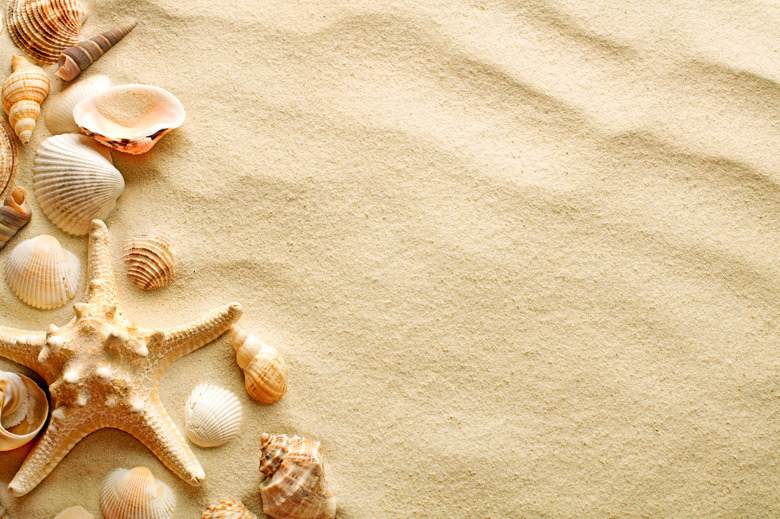Seashell Characteristics
Millions of years ago, wormlike creatures lived in the primeval seas. They were the first known mollusks, using salt and chemicals from the ocean to build shelters around their soft bodies. Today, shells are often found on beaches and may be empty. The mollusk may have been eaten by other animals or simply rotted away. Snails, mussels, clams and oysters can also be found in lakes, streams and rivers. It's against the law in some parts of the world to collect shells that contain living animals.
What is a seashell?
What is a seashell?
The shells of mollusks are their exterior skeletons, providing them with shelter, security from predators and shape. The family of Mollusca, or seashells, includes the clam, oyster, snail, slug and octopus. The soft-bodied part of the seashell has a head, foot, visceral hump and mantle.
Different Types of Exoskeletons
Different Types of Exoskeletons
The size and the shape of the mollusk exoskeleton varies, and in some cases the skeleton is lost completely. Aplacophorans have a worm-like body without a shell. Most mollusks are between 0.4 to 8 inches long, although larger mollusks such as squids are present in our oceans. Seashells come in different shapes, textures and colors. The adult of the queen conch, found between Bermuda and Brazil, has a large shell with knob-like spines.
Color and Shape
Color and Shape
The color and shape of a seashell is influenced by diet and purpose. When the diet is changed, spots, spirals or lines appear in the shell. Different color pigments also help reinforce the shell. Thus, its color helps determines its function. Each shell is individual, and food, climate, environment, accidents and the mollusk's heredity play a role in its formation.
The shell's inner layer is made mostly of calcium carbonate. The other two layers are made of conchiolin and calcite. A liquid form of calcium is found in the mollusk's blood and this is used to form calcium carbonate crystals. The outer organ of the mollusk deposits sheets of the crystals. The crystals vary in shape and orientation, and each layer that is formed looks different.
Single and Bivalve Shells
Single and Bivalve Shells
Single and bivalve shells are found throughout the world. Snails have a single shell, which spirals outward and to one side as it grows. The chambered nautilus has a shell that coils flatly in a single plane, and tusk shells grow in a narrow and curved coned shape. Bivalvia, such as oysters, clams, mussels and scallops, have a shell with two parts, like a hinged box that covers the soft body of the mollusk. Some of these shells are designed to help the mollusk stay at the bottom of the sea or river. The primitive deep-sea mollusk named neoplinia has a single shell that fits the body like a cup. Deep-sea worms such as aplacophora have calcareous spines on their bodies in place of a shell.
References
Cite This Article
MLA
Jomard, Asa. "Seashell Characteristics" sciencing.com, https://www.sciencing.com/seashell-characteristics-8319649/. 22 November 2019.
APA
Jomard, Asa. (2019, November 22). Seashell Characteristics. sciencing.com. Retrieved from https://www.sciencing.com/seashell-characteristics-8319649/
Chicago
Jomard, Asa. Seashell Characteristics last modified March 24, 2022. https://www.sciencing.com/seashell-characteristics-8319649/
